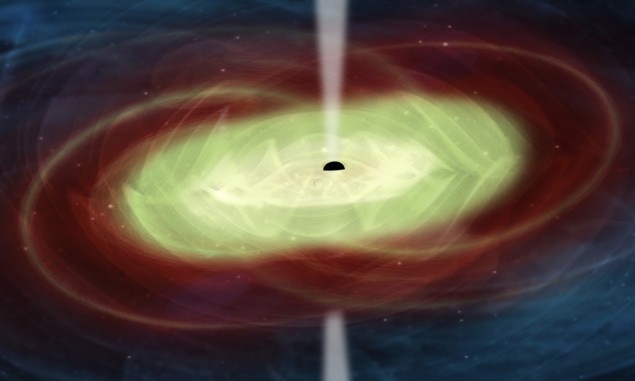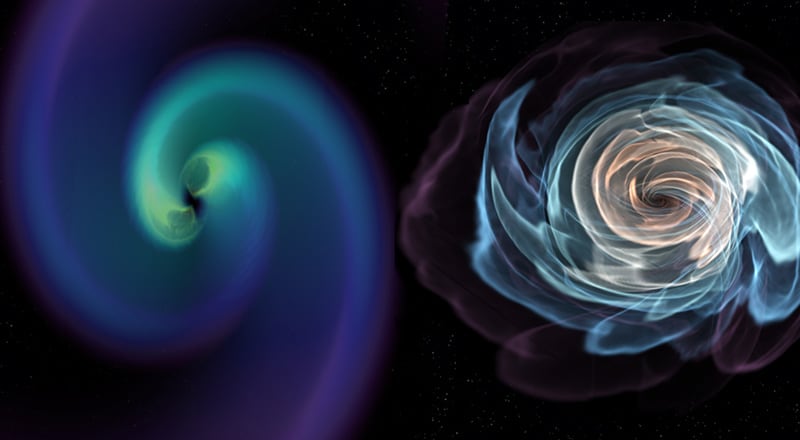
Some spinning binary black holes can tidally deform as they merge together – according to new calculations by Alexandre Le Tiec at the Observatory of Paris, and Marc Casals at the Brazilian Centre for Research in Physics. The duo has shown that supermassive black holes will tidally bulge as stellar-mass bodies spiral into them. The results offer new guidance for future measurements of the gravitational waves emitted by such black hole mergers.
In strong gravitational fields, rigid bodies including planets will deform. The effect can be quantified using three “tidal Love numbers” (TLNs), which describe how an object will deform when subject to tidal forces. Scientists are keen on measuring TLNs because they encode crucial information about the internal structures of massive bodies – including the compositions of planets and exoplanets. The same mathematics can be used to study deformations of merging neutron stars, which can be observed using gravitational waves. This has allowed astronomers to place constraints on the deformations of merging neutron stars.
The situation, however, is not clear with black holes. Previous calculations have shown that within static gravitational fields, non-spinning black holes should display no deformation at all. Yet since all black holes are believed to rotate to some degree, it has remained unclear whether this assumption holds for mergers in which tidal fields caused by the mutual attraction of the black holes are asymmetric around each black hole’s rotational axis.
Tiny bulge
Through new theoretical analysis, Le Tiec and Casals predict that tidal bulges can indeed occur during mergers. For a black hole spinning at 10% of its maximum possible rate in an asymmetric tidal field, their calculations show that tidal bulges can appear, with a corresponding quadrupolar TLN of 0.002. In comparison, the quadrupolar TLN for a much more deformable Earth is 0.3, while a neutron star has a number of about 0.1.

Spectacular collision of two neutron stars observed for first time
While this means that black holes must be far more rigid than planets and neutron stars, the duo predict that their deformation should be enough to influence merger dynamics. For example, in the case of a stellar-mass black hole spiralling into a supermassive black hole potentially billions of times more massive, the resulting tidal bulge in the larger object would generate a torque, slowing down its rotation. In turn, the effect may influence the properties of the gravitational waves produced when the black holes merge – although this would be far too subtle to detect with the current LIGO–Virgo gravitational detectors.
Le Tiec and Casals hope that the situation could change with the ESA’s Laser Interferometer Space Antenna (LISA) mission, with a planned launch date of 2034. As the first space-based gravitational wave detector, the probe will enable astronomers to place constraints on black hole deformation roughly 8 orders of magnitude more stringent than current ones on neutron stars. Using the duo’s theories to study these future results, astronomers could gain important clues about the compositions of the most massive bodies in the known universe.
The research is described in Physical Review Letters.
